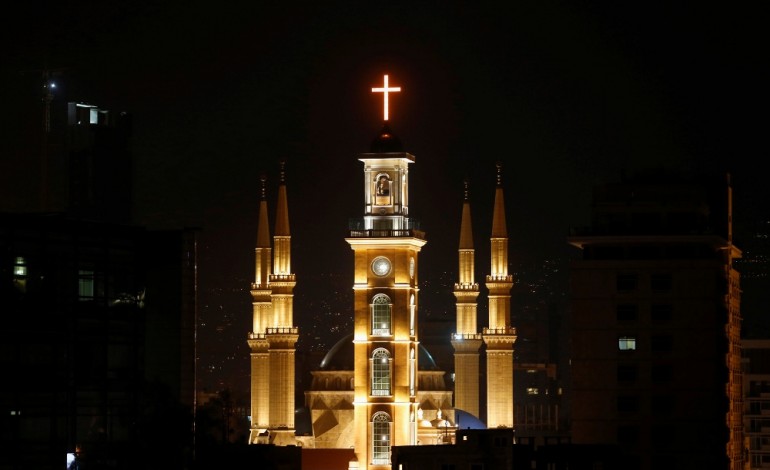(AhlulBayt News Agency) - The new bell tower of the 19th century Saint George Cathedral is Beirut’s tallest at 72m (236ft) – the same height as the four minarets of the Mohammad al-Amin mosque that has dominated the city skyline since it was built over a decade ago.
Topped with an enormous cross that lights up at night, the bell tower has undergone about a decade of construction.
Both the church and mosque are prominent features of the Beirut city centre that is still being rebuilt from the civil war, and are located near the frontline that divided Christian east Beirut from Muslim west Beirut during the conflict.
Archbishop Paul Matar said the idea of building a bell tower at Saint George Cathedral was a dream since its construction in 1894. It was originally supposed to be 75m high, the same size as the tower at Rome’s Basilica di Santa Maria Maggiore that inspired the cathedral’s design.
But instead, Matar said he shaved 3m off the design in what he described as a message of coexistence.
“When the mosque was built we were happy there would be a mosque and a church near each other. This is the slogan of Lebanon,” he said in an interview at his offices in Beirut. “So therefore I wanted the tower’s height to be at the same height as the mosque, so there is solidarity and harmony,” he said.
The cathedral belongs to Lebanon’s Maronite Christian church, the biggest Christian community in the country.
After the guns fell silent, years were spent rebuilding the cathedral and dozens of other damaged or destroyed churches in Beirut, holding up the start of work on the tower, Matar said.
In terms of their size, al-Amin mosque and tower have broken new ground for religious buildings in Beirut. Critics say both are out of scale with the city’s other places of worship.
Some Christians saw the Amin mosque as an affront to their community. Its size, compared to nearby Christian places of worship, was jarring for some Maronites, who emerged as the political losers of the civil war.
The mosque’s imperial Ottoman style, not found anywhere else in Lebanon. It was built on the site of a small prayer corner with the same name.
But the bell tower’s intended message of interfaith solidarity and unity has not reached everyone. George Arbid, director of the Beirut-based Arab Center for Architecture, said that it pointed to lingering sectarian rivalry in the city.
“It is clear that it is a type of competition – be it positive or negative – with the minarets of the Amin mosque that is next to it,” he said. “It is a continuation of a type of competition that emerged before this time, a competition between the sects for their presence in the city.”
/106

